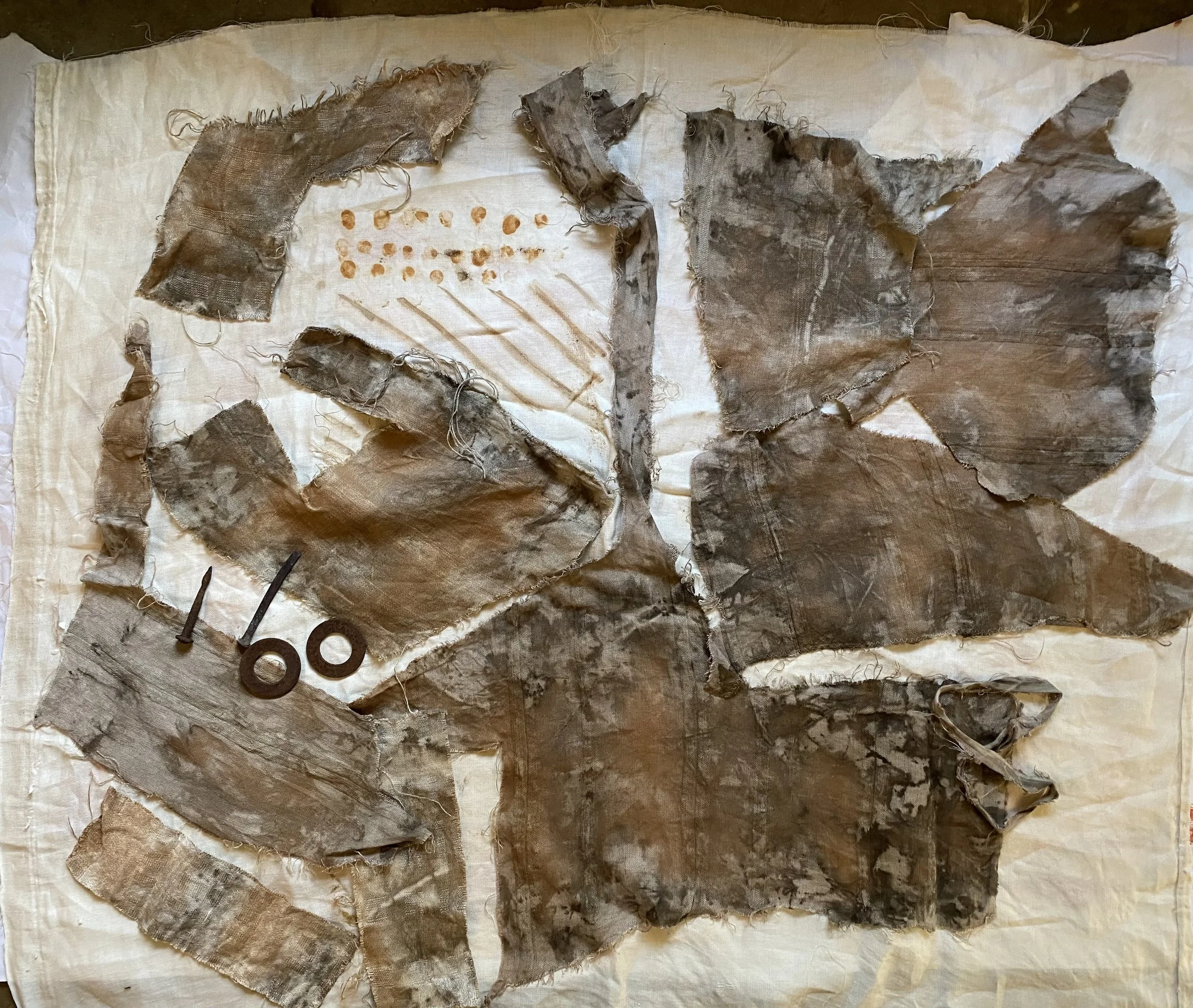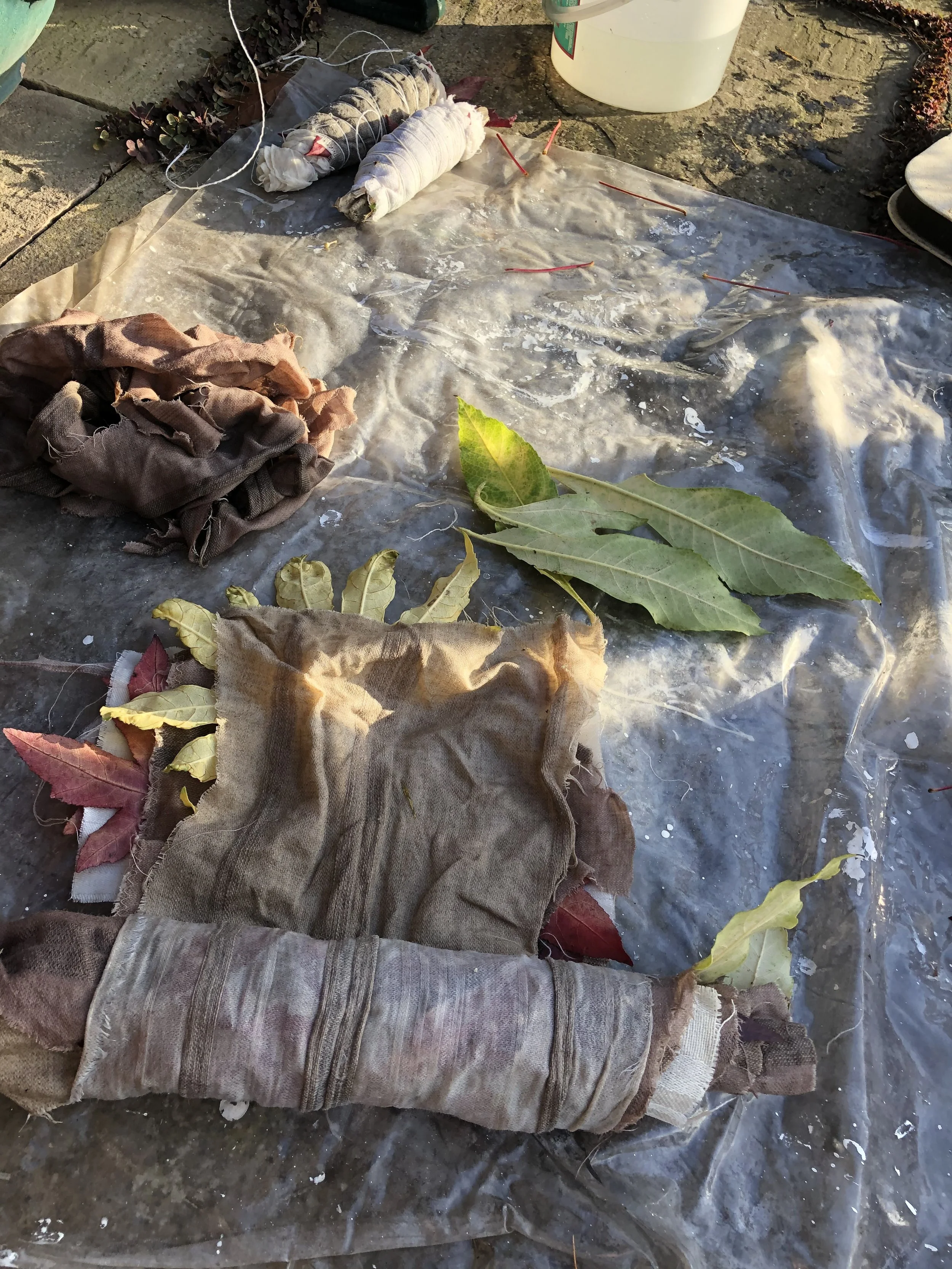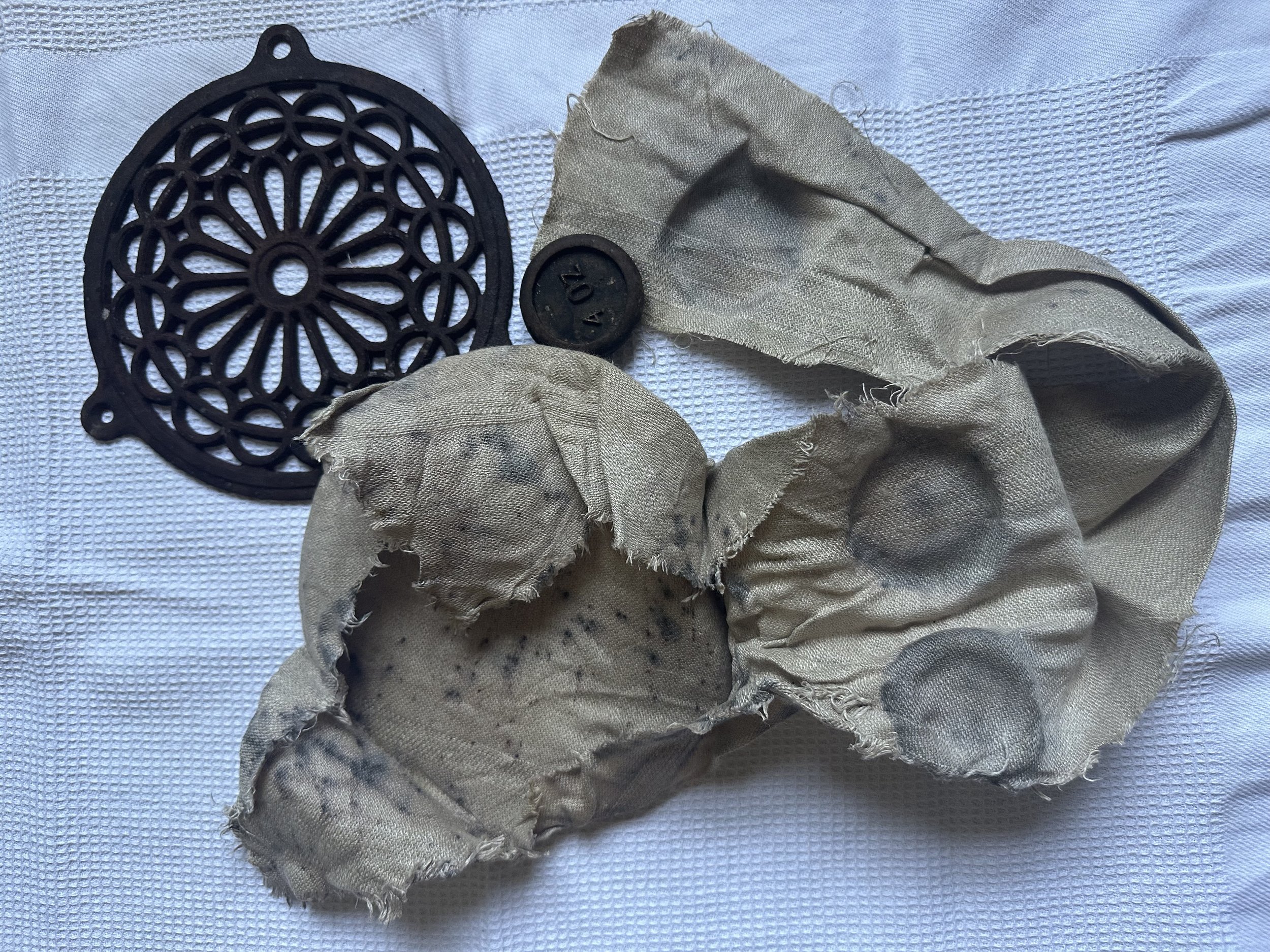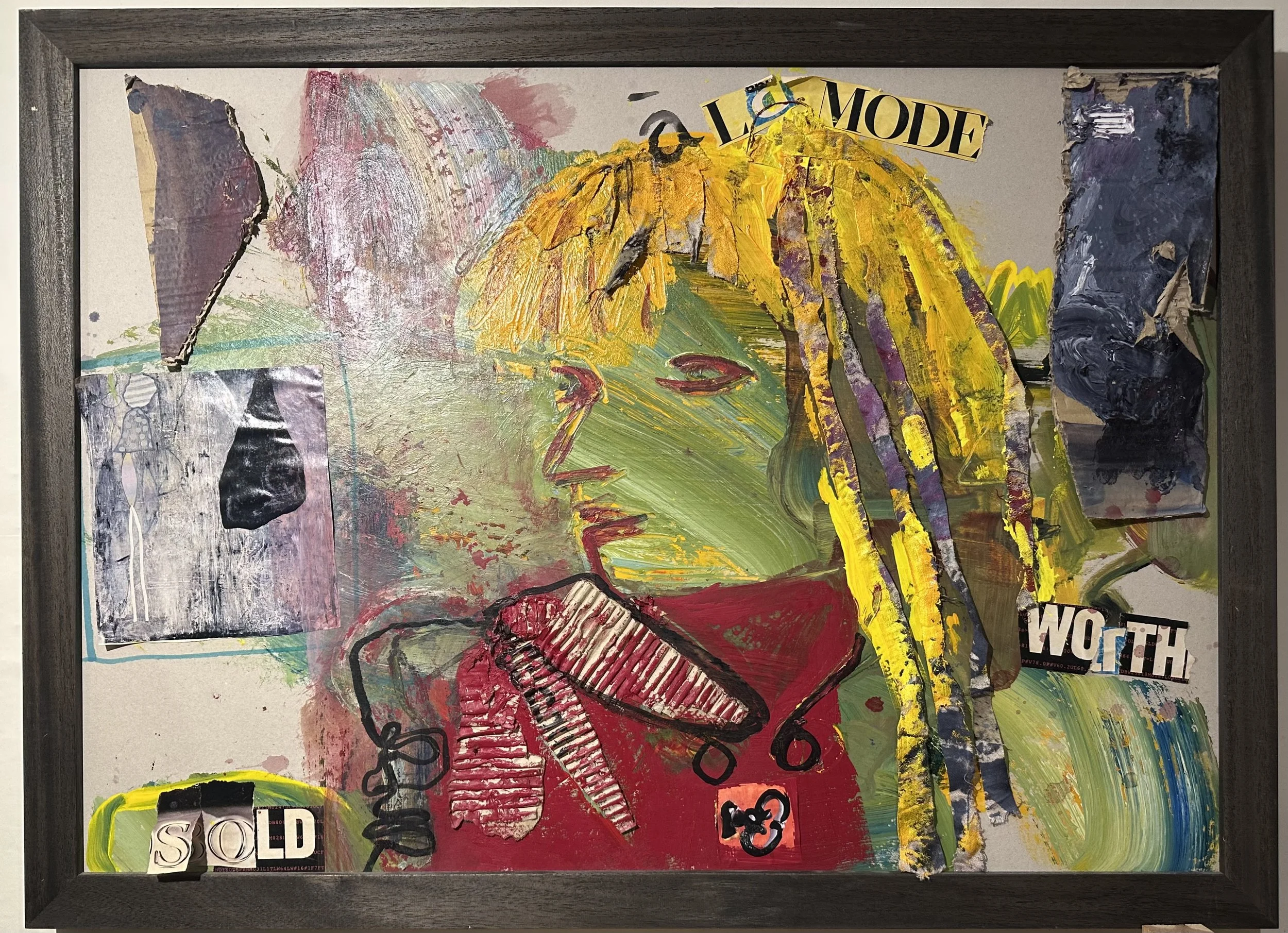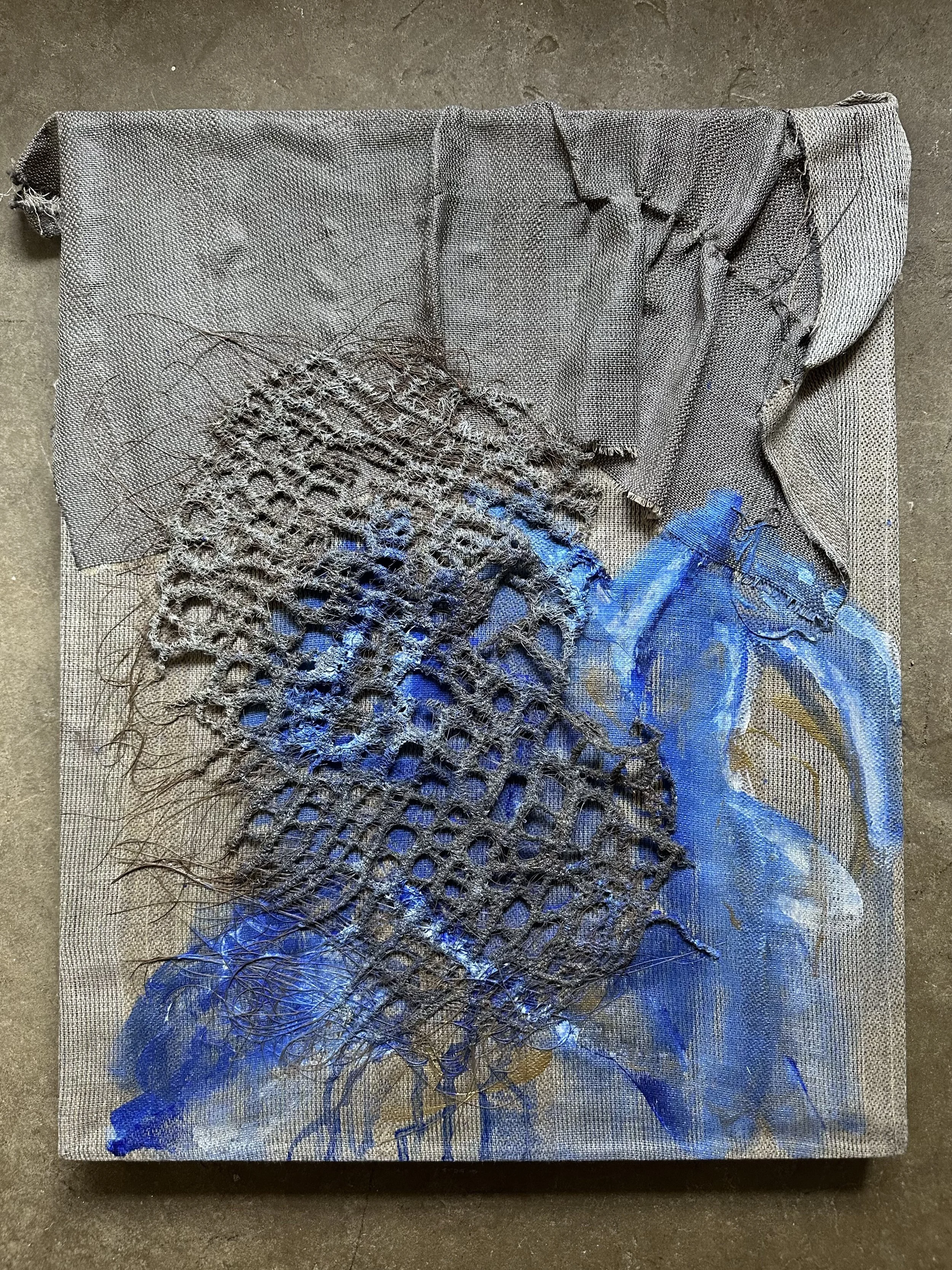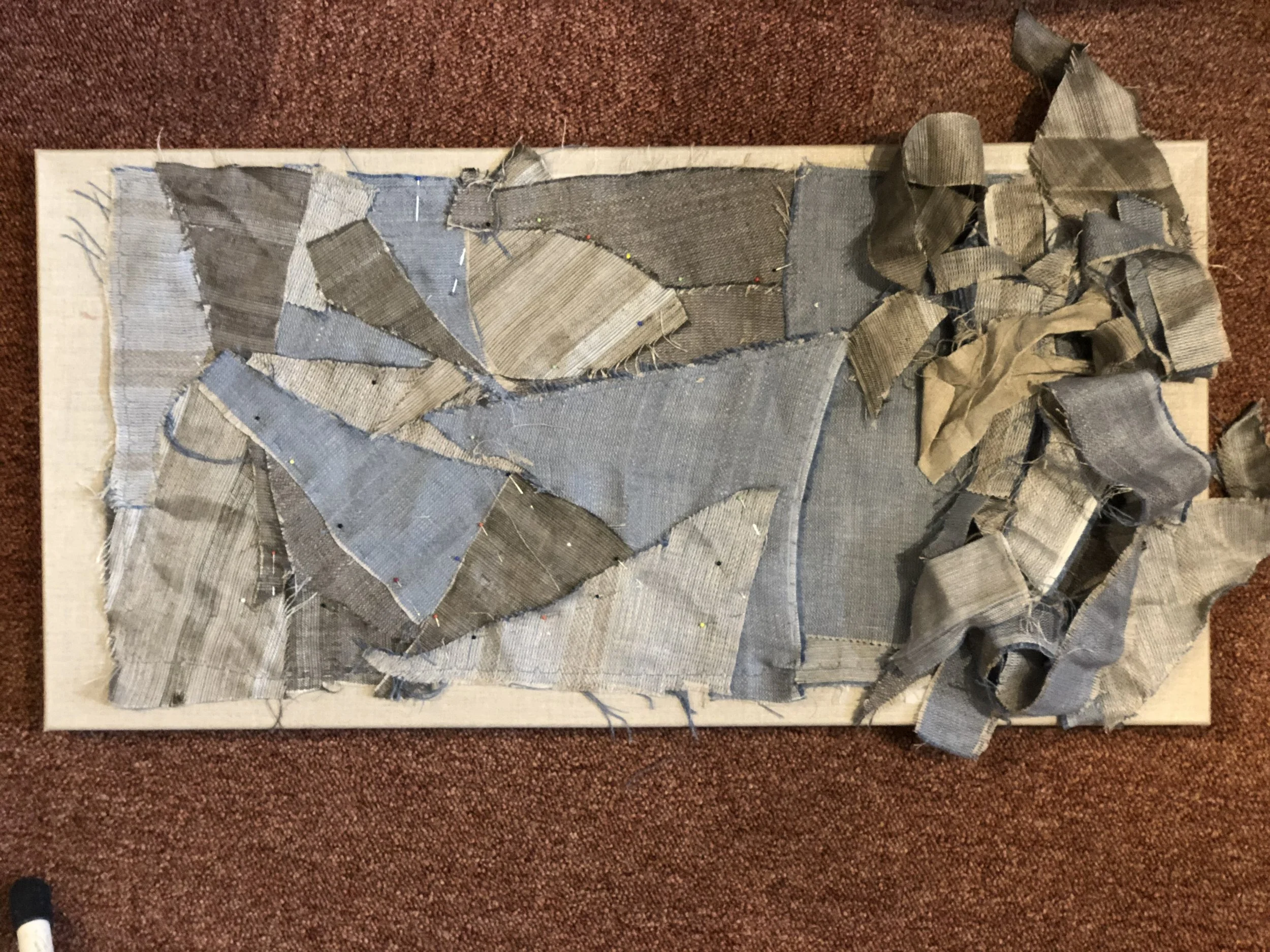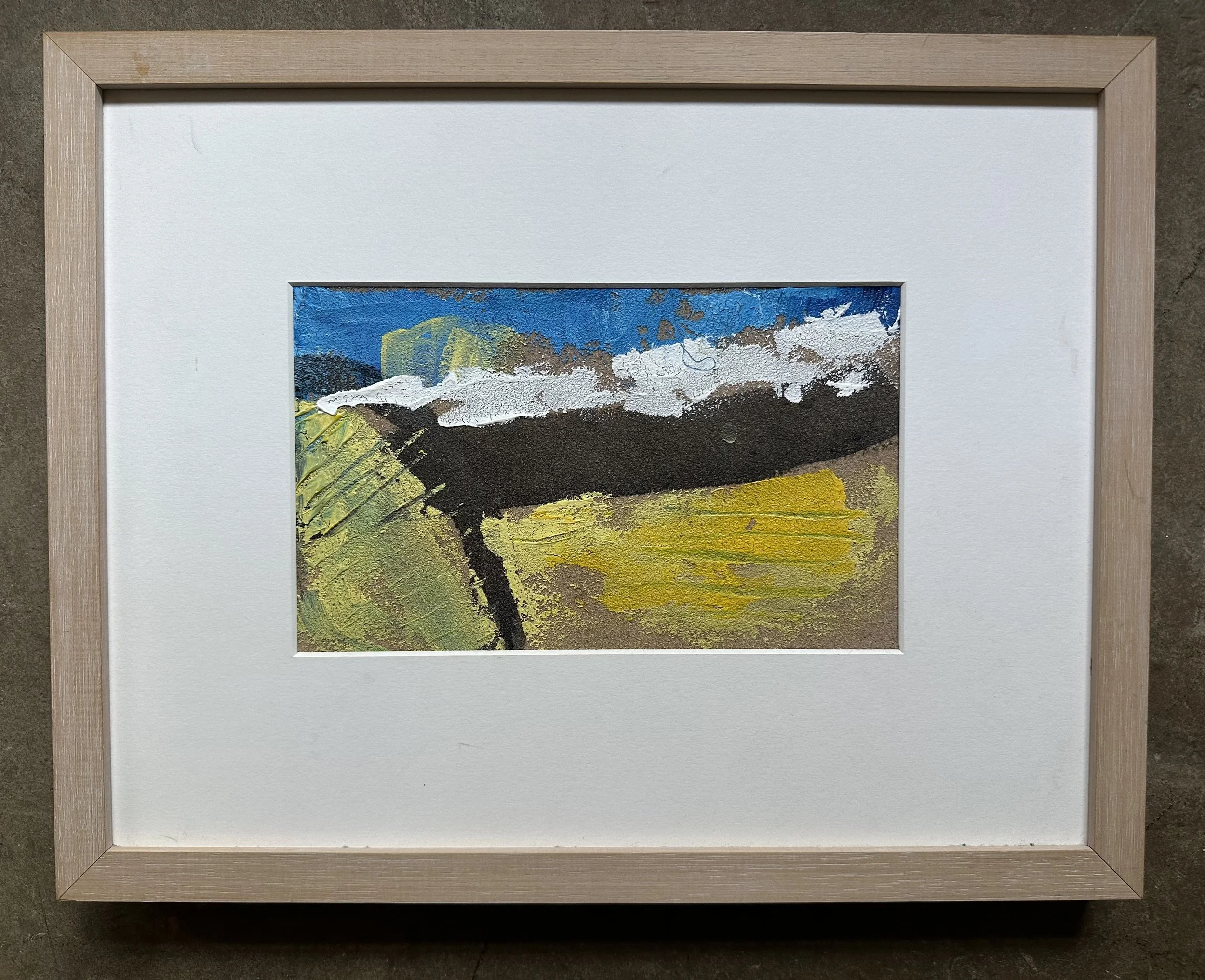Materials & Surface
From salvaged scraps to stitched fragments, Fran White’s work is a tactile exploration of memory, place, and intuition. Her work often begins not with a blank canvas, but with previously used household items such as roller blinds, cardboard, worn fabrics, and saved linens.
In this conversation, Fran reflects on what she chooses to use, what she rescues from the everyday, and how these all help her to share her thoughts, feelings and memories.
What I Choose, What I Save, and What I Rescue
It all starts with a feeling. I do however find myself repeatedly drawn to unbleached linen, either as a stretched canvas or simply the fabric - a colour or not a colour. Cardboard is also hard to resist.
I love to rescue something most people would discard, such as the rusted shape I picked up on a Cornish beach - a household mop & basket - a kitchen spatula.
I collect these materials without really knowing exactly how I will use them. However I do find when I am researching something, for example rust, I begin to discover rusted objects all over the place, while weeding in the garden, on the rubbish heap even already in my studio
My eyes seem to become attuned when I’m on a particular path, however it is very easy to accumulate too much and from time to time one needs to declutter.
From Fabric to Fine Art
Texture plays a big part in how I choose my materials. Weaving with linen at College, rather than wool or cotton, felt like coming home. Using different thicknesses of yarn in my warp was particularly important to me. When washed these yarns behave in different ways producing instant texture - a useful piece of knowledge I apply when using these same linens to paint on.
I don’t now see a distinction between “fine art” materials and domestic or everyday ones, however, it took me a while to realise that painters had been using cardboard as a base for a very long time - it is even referenced in the16th Century. This definitely gave me permission to do the same (see à La Mode below). I also started learning about and noticing artists who felt free to use practically anything to paint on.
Blurring the lines further - I always thought my own fabric could be used for both interiors and clothing but I now also include ‘for making canvases’ and/or just to paint on un-stretched.
I found selling my industrially woven linen fabrics an uphill struggle - should I take the trade or retail route, in the end we went for both markets. Quite early on I found myself painting onto these fabrics in what might appear to have been a rather destructive manner. I realise now I was simply trying to ‘bring them down to earth’ instead of idolising them and making them too special to use in whatever way I wanted…
Getting dressed in the morning for me is sometimes a bit like making a painting - it can take a long time - I’m considering colour, textures, balance, proportion….
The Magic of Scraps and Salvage
The most unexpected item I’ve incorporated into a piece is the textured hairy leaf bases from the trunk of Trachycarpus Fortunei - Chusan Palm (above). I started by machine stitching into this incredible natural structure that resembles weaving, later I used it in an installation as well as painting it on to my fabric which I had put on a stretcher. Also pinoleum blinds (below left) from our conservatory, I made marks on these influenced by Aboriginal ‘rarrk’ or ‘cross hatching’ I had seen at the Australia exhibition at the RA.
Working with scrap/salvaged materials is also my attempt at not being wasteful, even though I may be wasteful in other areas of my life. Inevitably when running a fabric shop there are scraps and ‘fallout’ to salvage, leftovers from garment and soft furnishing. Over the years we up-cycled odd shapes and pieces into appliqué, patchwork, pieced clothes (above right). I have now incorporated some into my slow-stitching practise. I eco-dye and/or make marks on them with rusted items first.
- Mountains of the Mind
Mountains of the Mind is a multi media artwork where I machine stitched linen oddments and glued these on to a ready made canvas base before applying acrylic etc on top.
Fabric prep for Mountains of the Mind
Canvas? Cardboard? Roller Blind? Why Not All Three?
For me the materials lead the way.
In a discussion with a tutor from May 2010 we agreed on the importance of the actual ‘canvas’ I paint on - the processing of this base material is integral to my practise. I do not have to paint inside a fixed canvas - the ‘stuff’ I ‘paint’ on is part of the ‘painting’.
I did a small painting on sandpaper over a decade ago “Cloud Hidden” (below) which I still love.
- Cloud Hidden
Different surfaces influence the way you apply paint, create texture and make marks so, for my work, the background often needs to be strong enough to take sweeping brush strokes of acrylic paint. However recently I drew with coloured graphite and ink on very fine linen both of which were very successful
What My Materials Say About Me
I hope the materiality of my artwork intrigues sufficiently to draw people in to investigate further.
Being obsessed by textiles led me to study weaving at College. My dissertation was on Damask tablecloths, their design and use. My chosen weave structure was a simplified damask which satisfied my curiosity and allowed me to play with all types of linen yarn.
Apparently my Canadian maternal great-grandfather had a Dry Goods Store - did I inherit my interest from him? From all accounts his daughter [my granny] was extremely stylish and always very well turned out in the latest fashions. I’m certain my American paternal Granny was also very keen on textiles.
Waste not want not is an oft referred mantra.
Japanese Textile designer Reiko Sudo quotes the ‘mottainai’ ethic meaning ‘waste not, want not’ as being very important to her. Being an independent designer industrial mills considered my orders were too tiny to be taken seriously. Luckily I discovered a small mill in Northern Ireland who delivered a 30 metre bolt of woven linen to me in February 1999. I was very cautious about using it, even reluctant to cut it at all! In the end my first customer encouraged me to do so.

